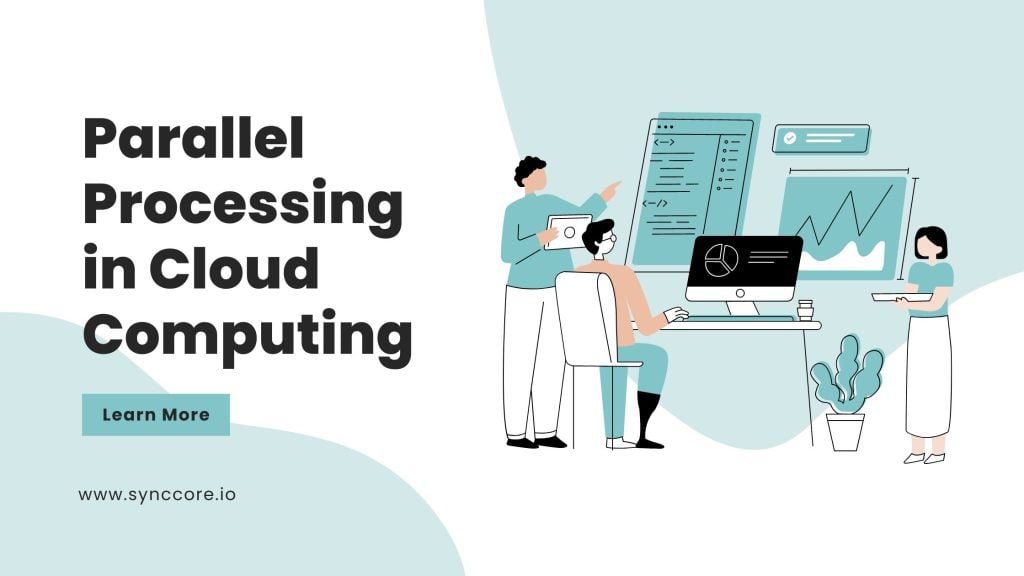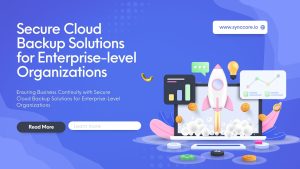Table of Contents
Parallel Processing in Cloud Computing
In a particular type of computing architecture known as parallel computing, several processors work together to carry out various minor calculations, each part of a more significant, complex problem.

What is Parallel Computing?
When a larger problem is divided into smaller, independent, frequently similar components that can be worked on concurrently by several processors connected by shared memory, the process is known as parallel computing. The completed results are combined as a component of a larger algorithm. Increasing the amount of computation power available for quicker application processing and problem-solving is the main objective of parallel computing.
The majority of parallel computing infrastructure is kept in a single data center, where several processors are installed in a server rack. The application server distributes computation requests in small chunks, which are then executed concurrently on each server.
Bit-level parallelism, instruction-level parallelism, task parallelism, and super word-level parallelism are the four main parallel computing models that are typically offered by both proprietary and open-source parallel computing vendors:
Bit-Level Parallelism: expands the word size of the processor, reducing the number of instructions required to operate on variables longer than the word.
Instruction-Level Parallelism: The hardware approach uses dynamic parallelism, where the processor chooses which instructions to execute in parallel at runtime; the software approach uses static parallelism, where the compiler chooses which instructions to execute in parallel.
Task Parallelism: A method of parallelizing computer code across several processors that executes numerous tasks concurrently on the same data.
Superword-level parallelism: A vectorization method that can take advantage of inline code parallelism.
Fine-grained parallel applications, in which subtasks communicate several times per second; coarse-grained parallel applications, in which subtasks do not communicate several times per second; or embarrassing parallel applications, in which subtasks communicate infrequently or never; are the three main categories of parallel applications. By performing a straightforward operation on each element of a sequence without requiring communication between the subtasks, mapping is used in parallel computing to solve embarrassingly parallel problems.
Parallel computing gained popularity and developed in the twenty-first century as a result of the power wall that processor frequency scaling hit. Programmers and manufacturers started developing parallel system software and making multi-core, power-efficient processors to address the problem of power consumption and overheating central processing units because increases in frequency increase the amount of power used in a processor, and scaling the processor frequency is no longer possible after a certain point.
The growing use of multicore processors and GPUs has increased the significance of parallel computing. To increase the data throughput and the number of active calculations within an application, GPUs collaborate with CPUs. A GPU can accomplish more work than a CPU in a given amount of time by utilizing the power of parallelism.
Fundamentals of Parallel Computer Architecture
Numerous parallel computers use parallel computer architecture, which is categorized based on the degree to which the hardware supports parallelism. Programming methodologies and parallel computer architecture cooperate to make use of these machines. Following are some of the parallel computer architecture classes:
Multi-Core Computing
A multi-core processor is an integrated circuit in a computer that houses two or more distinct processing cores, each of which runs programs in parallel. Cores may implement architectures like multithreading, superscalar, vector, or VLIW and are integrated onto multiple dies in a single chip package or onto a single integrated circuit die. There are two types of multi-core architectures: homogeneous, which only has identical cores, and heterogeneous, which also has cores that aren’t identical.
Symmetric Multiprocessing
Multiprocessor computer hardware and software architecture in which two or more independent, homogeneous processors are managed by a single operating system instance that treats all processors equally, is connected to a single, shared main memory with full access to all shared resources, and is connected to various peripherals and devices. Each processor can perform any task regardless of where the necessary data is stored in memory because they each have a private cache memory and can be linked together using on-chip mesh networks.
Distributed Computing
Different networked computers that make up a distributed system’s components are connected by message queues, RPC-like connectors, and pure HTTP to coordinate their actions. Independent component failure and concurrent component failure are important properties of distributed systems. Typically, client-server, three-tier, n-tier, or peer-to-peer architectures are used in distributed programming. There is a lot of overlap in distributed and parallel computing, and the terms are occasionally used synonymously.
Massively Parallel Computing
The use of multiple computers or computer processors to execute a set of computations in parallel. One approach entails grouping several processors into a tightly structured, centralized computer cluster. Grid computing is another approach, in which many widely distributed computers collaborate and communicate via the Internet to solve a specific problem.
Specialized parallel computers, cluster computing, grid computing, vector processors, application-specific integrated circuits, general-purpose computing on graphics processing units (GPGPU), and reconfigurable computing with field-programmable gate arrays are examples of parallel computer architectures. In any parallel computer structure, the main memory is distributed or shared.
Parallel Computing Software Solutions and Techniques
To facilitate parallel computing on parallel hardware, concurrent programming languages, APIs, libraries, and parallel programming models have been developed. The following are some parallel computing software solutions and techniques:
Application Checkpointing:
A method for providing fault tolerance for computing systems by recording all of the application’s current variable states and allowing the application to be restored and restarted from that point in the event of failure. Checkpointing is a critical technique for highly parallel computing systems, which distribute high-performance computing across a large number of processors.
Automatic Parallelization:
Refers to the process of changing sequential code into multi-threaded code in a shared-memory multiprocessor (SMP) machine to take advantage of multiple processors at once. Techniques for automatic parallelization include code generation, analysis, scheduling, and parsing. The Paradigm compiler, Polaris compiler, Rice Fortran D compiler, SUIF compiler, and Vienna Fortran compiler are typical examples of popular parallelizing compilers and tools.
Parallel programming languages:
Commonly, parallel programming languages are divided into shared memory and distributed memory categories. While shared memory programming languages interact by manipulating shared memory variables, distributed memory programming languages use message passing.
Difference Between Parallel Computing and Cloud Computing
The delivery of scalable services, such as databases, data storage, networking, servers, and software, over the Internet on an as-needed, pay-as-you-go basis is referred to as “cloud computing” in general.
Cloud computing services are fully managed by the provider, allow for remote access to data, work, and applications from any device in any location with an Internet connection, and can be either public or private. Platform as a Service (PaaS), Infrastructure as a Service (IaaS), and Software as a Service are the three most popular service categories (SaaS).
Cloud computing services are fully managed by the provider, allow for remote access to data, work, and applications from any device in any location with an Internet connection, and can be either public or private. Platform as a Service (PaaS), Infrastructure as a Service (IaaS), and Software as a Service are the three most popular service categories (SaaS).
Difference Between Parallel Processing and Parallel Computing
To speed up processing, separate components of a larger, more complex task are divided up and run simultaneously on various CPUs. This technique is known as parallel processing.
Computer scientists typically divide and assign each task to a different processor with the help of parallel processing software tools, which will also work to reassemble and read the data once each processor has solved its specific equation. Either a computer network or a machine with two or more processors is used to carry out this process.
Since parallel processing and parallel computing go hand in hand, the terms are frequently used interchangeably. However, while parallel processing refers to the number of cores and CPUs that are running concurrently in a computer, parallel computing refers to how software behaves to maximize performance under those circumstances.
Difference Between Sequential and Parallel Computing
Since parallel processing and parallel computing go hand in hand, the terms are frequently used interchangeably. However, while parallel processing refers to the number of cores and CPUs that are running concurrently in a computer, parallel computing refers to how software behaves to maximize performance under those circumstances.
Comparing sequential programming performance to parallel computing benchmarks is far more difficult and time-consuming than sequential programming performance benchmarks, which typically only involve locating system bottlenecks. With benchmarking and performance regression testing frameworks, which make use of different measurement methodologies like statistical treatment and multiple repetitions, benchmarks in parallel computing can be achieved.
It is particularly clear in parallel computing for data science, machine learning, and parallel computing artificial intelligence use cases that this bottleneck can be avoided by moving data through the memory hierarchy.
In essence, sequential computing is the antithesis of parallel computing. The benefit of being able to solve a problem more quickly frequently outweighs the expense of purchasing parallel computing hardware, even though parallel computing may be more complicated and expensive upfront.



